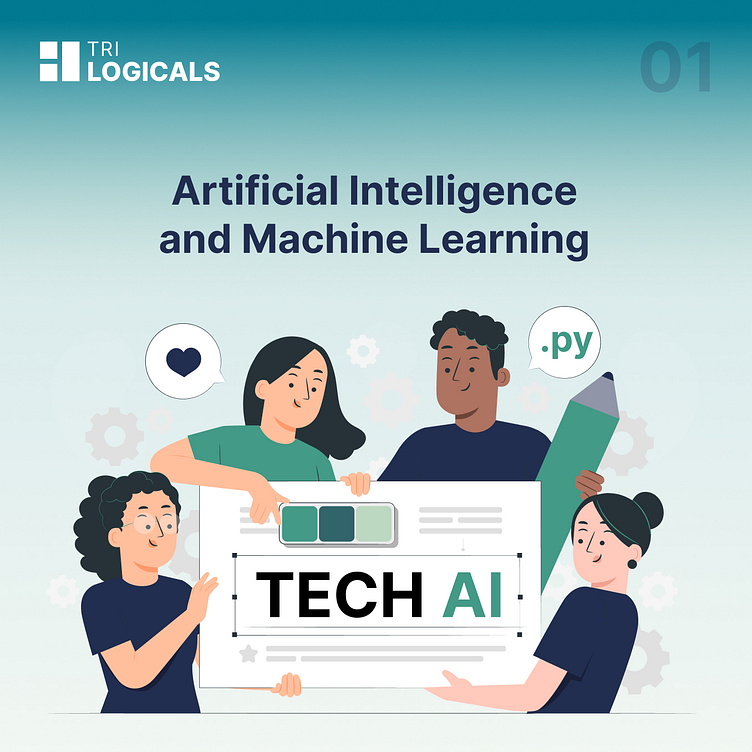Artificial Intelligence (AI) and Machine Learning
Artificial Intelligence (AI) and Machine Learning
Artificial Intelligence (AI) and Machine Learning
Artificial Intelligence (AI) is a groundbreaking field that emerged in the 1940s and 1950s intending to equip computers with a form of basic cognition. Think of it as teaching a child gradually through play and conversation; similarly, AI imparts fundamental reasoning abilities to computers. As we feed them new data, these machines learn and adapt, allowing them to make decisions based on their acquired knowledge.
Difference between conventional technology and artificial intelligence.
The fundamental difference between conventional technology and artificial intelligence lies in the fact that traditional technology operates based on pre-programmed instructions and fixed algorithms, while artificial intelligence possesses the ability to learn from and adapt to real-time data, enabling it to make decisions and generate insights autonomously.
Now, let's delve into the key distinction between conventional technology and AI. In traditional technology, we encode specific instructions and formulas into computers, causing them to follow a predetermined set of rules without generating anything new. In stark contrast, AI endows computers with the capacity to learn from real-time data and make decisions based on that data. Consider the example of road cameras: these devices continuously refine their understanding and make future decisions based on the latest data they've collected. In essence, AI offers a dynamic and adaptable approach, while conventional technology relies on fixed formulas to yield similar results.
What is machine learning?
Machine learning is a branch of artificial intelligence (AI) that empowers computers to enhance their performance on specific tasks by learning from data without the need for explicit programming. In essence, it's a technique that allows machines to acquire knowledge from data and utilize it for predictions, decision-making, or pattern recognition.
The key components of machine learning include:
1. Data: Machine learning systems rely on data as their foundation for learning. Data can take various forms, such as text, images, numbers, or any other relevant information.
2. Algorithms: Machine learning employs various mathematical models and techniques, like decision trees, neural networks, support vector machines, and more, to analyze data and extract meaningful patterns.
3. Training: During the training phase, machine learning models are exposed to labeled datasets, enabling them to learn patterns, correlations, or trends present in the data.
4. Testing and Validation: Following training, the model is assessed on new, unseen data to evaluate its accuracy and performance, ensuring its ability to generalize knowledge for predictions on real-world data.
5. Feedback Loop: Machine learning models often incorporate a feedback mechanism that allows them to continually learn and adapt as they encounter new
